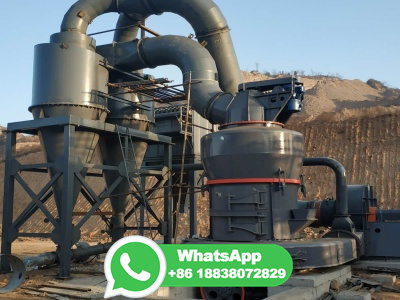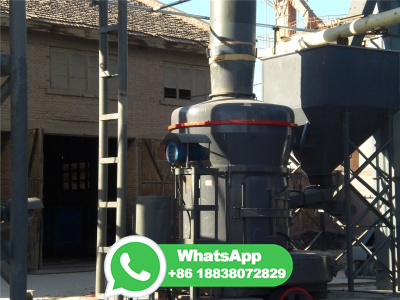
Hunter process in the Free World, is reported to start up in Nov. 1982 its 5,000 tons/year plant as a replacement of shutdowned Titanium Plant, Imperial Chemical Industry. (5) RMI Co. reported that the increased use of statistical process control systems and process improvements in the reduction and saltmetal separating
WhatsApp: +86 18037808511
· The most effective means for the recovery of metals .. Molten slag may be fed directly to the MVA furnace from a premelting .. When treating furnace slag ..
WhatsApp: +86 18037808511
It will produce 1,08,000 tonnes of titanium slag, 68,000 tonnes of high purity pig iron, 40,000 tonnes of dioxide pigment and 10,000 tonnes of titanium sponge. TPPL has already entered into an agreement with the Indian Rare Earth Limited (IREL) for the supply of the raw material Ilminite.
WhatsApp: +86 18037808511
Process for the extracting oxygen and iron from iron oxidecontaining ores: : ... making it unavailable to chlorinate the titanium. Processes exist to remove iron from ilmenite and similar ores, and to produce synthetic rutile, which can be used in the chloride process. ... HCl gas from the HCl regeneration plant is injected at a rate ...
WhatsApp: +86 18037808511
While titanium dioxide itself is a useful, nontoxic compound, titanium waste is extremely acidic and its disposal methods create numerous environmental problems. '5 . Most coastal production plants using the sulfate process dump large amounts of sulfuric acid into the North Sea or connecting Although the
WhatsApp: +86 18037808511
The Step by Step Process of Extracting Iron from its Ore using the Blast Furnace with details of Chemical Reactions. Question Answers based on the process of ex. BBC GCSE Bitesize: Making iron. Blast furnace in a modern steel works. Iron is extracted from iron ore in a huge container called a blast furnace. ...
WhatsApp: +86 18037808511
The method comprises first magnetically extracting magnetite (Fe 3 O 4) from the ash. Next, the ash is leached with a solution of a mineral acid. This solution is then treated with a strong base to precipitate and remove titanium and iron hydroxides from .
WhatsApp: +86 18037808511
· Titanium dioxide, also known titania, is the naturally occurring oxide of titanium, the ninth most abundant element in the Earth's crust and the seventh most abundant metal. About 95% of titanium...
WhatsApp: +86 18037808511
· LONDON — Fodere Titanium Limited ("Fodere") the owner of a proprietary zero waste technology capable of extracting value from a wide variety of mineral and industrial waste feedstocks, today announced that it has commenced construction of a seven ton per day pilot plant near Kitwe, Zambia. The pilot plant is a crucial step towards demonstrating the .
WhatsApp: +86 18037808511
· The drying process increases particle segregation, with the technology's air classifier able to separate particle sizes down to mm. Whereas existing dry separation processes work for ...
WhatsApp: +86 18037808511
At the processing plant, the taconite is crushed into very small pieces by rock crushing machines. The crushers keep crushing the rock until it is the size of a marble. The rock is mixed with water and ground in rotating mills until it is as fine as powder. Separation The iron ore is separated from the taconite using magnetism.
WhatsApp: +86 18037808511
a method is disclosed for the recovery of iron aluminum and titanium from coal ash the method comprises magnetically extracting magnetite from the ash leaching the ash with a solution of a mineral acid precipitating and removing titanium and iron hydroxides from the leach solution by adding thereto a solution of a strong base and precipitating .
WhatsApp: +86 18037808511
Manufacture of titanium dioxide. There are two main processes, the Sulfate Process and the Chloride Process (Table 1) which use the two principal ores, ilmenite and rutile, respectively. Ilmenite contains 4560% TiO 2 and rutile contains up to 99% TiO 2. The ores are mined worldwide but most production is in Australia and South Africa.
WhatsApp: +86 18037808511
the process of extracting metal from ore irsil org. the process of extracting metal from ore This page looks at the use of the Blast Furnace in the extraction of iron from iron ore and the conversion of the raw
WhatsApp: +86 18037808511
The hematite produced is very pure and can be used for pigments, making ferrites, and also as sinter plant feed. In CTL process, pyrohydrolysis is used to convert ferric chloride to Fe 2 O 3 and HCl. Titanium Solvent Extraction. The next step in the CTL process is the solvent extraction of titanium from the raffinate of iron solvent ...
WhatsApp: +86 18037808511
Process Of Iron Extraction From Its Ore In A Furnance. Iron oxide, the ore from which iron to be extracted, is concentrated by roasting or calcination impurities can be molten iron obtained in this process contains 4 carbon, along with some other impurities like sulphur and is called pig of iron from its oxides
WhatsApp: +86 18037808511
A process for treating titaniferous iron ore or concentrate having a total iron content of at least 40% and a titanium dioxide content of less than 25% which comprises 2. A process according to claim 1 including the further steps of reducing the solid residue obtained to reduce the iron oxide to metallic iron and recovering said metallic iron.
WhatsApp: +86 18037808511
titanium metallic iron containing material oxidation Prior art date Appliion number PCT/AU1996/000059 Other languages French (fr) Inventor Stephen Fletcher Michael David Horne Original Assignee Commonwealth Scientific And Industrial Research Organisation Priority date (The priority date is an assumption and is not a legal conclusion.
WhatsApp: +86 18037808511
Process Of The Extraction Of The Iron Ore Solutions . The step by step process of extracting iron from its ore using the blast furnace with details of chemical of iron ore process processing processing iron processing, use of a smelting process to turn the ore into a form from which products can be fashioned.
WhatsApp: +86 18037808511
· The raw materials mix or "charge" enters the furnace from the top and hot air is blown or blasted from the bottom causing the coke to burn and the oxygen to combine with carbon in the coke to form carbon monoxide. Now, this carbon monoxide that is unstable, reacts with the ore to form carbon dioxide and iron. The Separation Of Iron.
WhatsApp: +86 18037808511